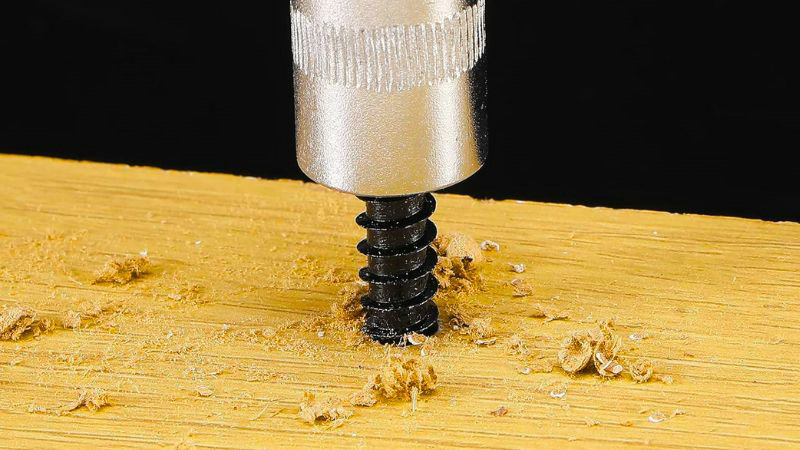
In the world of construction and heavy-duty DIY projects, you’ll often come across a need for sturdy joinery. Lag screws are your go-to fasteners for securing structures such as desks and pergolas or used to connect heavy lumbers and materials suffered from intense load.
What is Lag Screw and Where is Lag Screw Used for
Lag screws, sometimes known as lag bolts, are large wood screws with a coarse thread designed for the toughest construction tasks. Typically, you’d use these screws when you’re joining pieces of wood or mounting heavy items to wood, such as in the building of decks, beams, framing, and pergolas. Their design makes them ideal for applications where standard fasteners wouldn’t hold up, ensuring your heavy lumber or structural elements stay securely in place. In some cases, you should pre-drilled a pilot hole to prevent the splitting or snapping of your project.
What are lag screws specifically used for:
- Joining beams, joists, and rafters in framing
- Attaching ledger boards to house framing for decks
- Securing stair stringers to the framing
- Fastening fence posts and rails
- Assembling heavy furniture
- Joining thick, solid wood components
- Attaching hardware like hinges, brackets, or handrails
- Securing large timber trusses or structural elements
Components and Varieties
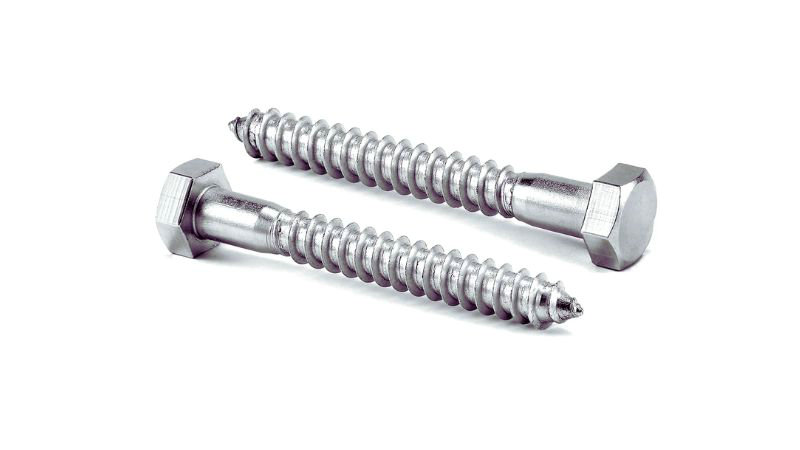
Lag screws with hexagonal heads come in various lengths and diameters, giving you versatility for different project requirements.
Hexagonal heads help lag screws accommodate wrenches for tightening, and the Coarse threads grip the wood and provide strong holding power.
Lag screws also have gimlet points which refer to the threaded, spiral pointed tip.
You can find lag screws come in various finishes, such as hot dip galvanized or stainless steel, to weather different environments without compromising structural integrity.
When selecting a lag screw, consider the demands of your project to choose the appropriate size and finish.
Physical Characteristics of Lag Screws
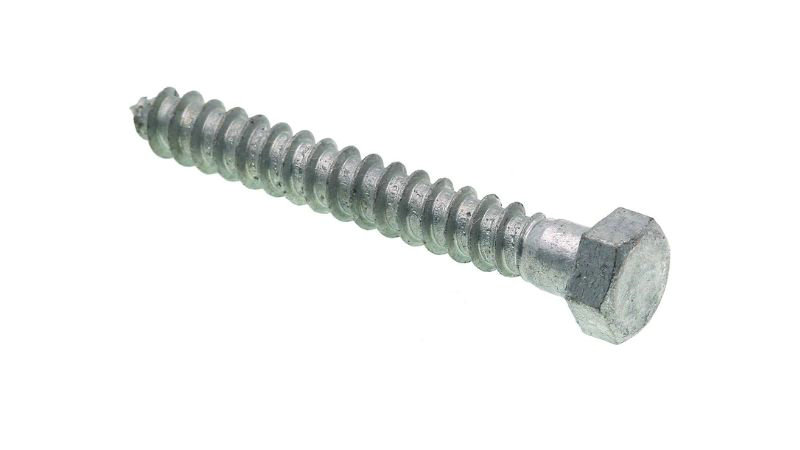
Lag screws are unique in their robust physical attributes. Their size, strength, and design tailor them for fastening heavy loads securely.
Sizes and Measurements
Lag screws vary in size and diameter, designed to accommodate different project needs. To select the appropriate size, you should measure the width of the materials you’re joining and choose a lag screw slightly shorter to ensure a tight fit without protruding.
Table of Standard Sizes:
| Diameter | Common Lengths | Typical Uses |
|---|---|---|
| 1/4 inch | 1 inch, 1-1/4 inches, 1-1/2 inches | Light-duty woodworking projects, joining wood to wood |
| 5/16 inch | 1-1/2 inches, 2 inches, 2-1/2 inches, 3 inches | Light to medium framing, decking, fencing |
| 3/8 inch | 2 inches, 2-1/2 inches, 3 inches, 4 inches | General construction, framing, deck ledger boards |
| 1/2 inch | 3 inches, 4 inches, 5 inches, 6 inches | Heavy construction, framing, timber connections |
| 5/8 inch | 4 inches, 5 inches, 6 inches, 8 inches | Heavy timber framing, structural connections |
| 3/4 inch | 6 inches, 8 inches, 10 inches, 12 inches | Very heavy timber construction, large structural members |
Material and Strength
Lag screws are typically made from Hot-Dipped Galvanized Steel and Stainless Steel.
- Hot-Dipped Galvanized Steel is one of the most popular and economical options for lag screws is hot-dipped galvanized steel. In this process, the steel is dipped in molten zinc to create a thick, corrosion-resistant coating. Hot-dipped galvanized lag screws are ideal for outdoor applications and use with pressure-treated wood.
- Stainless Steel often used for applications with exposure to water, salt, or harsh environments, stainless steel lag screws are used. Stainless steel provides excellent corrosion resistance but is more expensive than zinc or galvanized options.
How to Install The Lag Screws
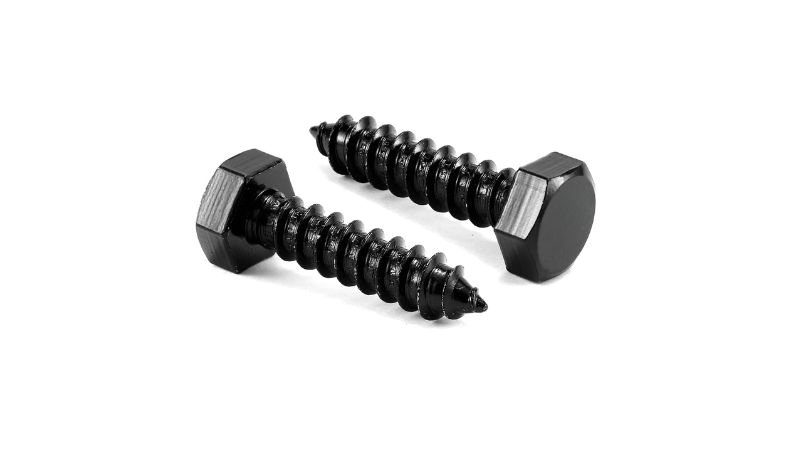
When installing lag screws, accurate preparation is essential for a secure hold. You’ll need to drill pilot holes and have the right tools on hand to ensure they’re fastened properly.
Preparation and Pilot Holes
Before you begin, select a drill bit that’s slightly smaller than the diameter of the lag screw’s threads to create your pilot holes. This will reduce the risk of splitting the material and make it easier to drive the screw in.
- Measure the thickness of the material to determine how long your lag screw needs to be. As a rule, choose a lag screw that’s around 1/4 inch shorter than the total thickness of the materials you’re joining.
- Inspect the lag screw for any damage or corrosion and ensure that its length is appropriate for the task at hand.
- Drill the pilot hole, ensuring it’s deep enough for the entire length of the screw.
Securing and Application
Once your pilot hole is drilled, it’s time to secure the lag screw.
- Start by threading the screw into the hole by hand to ensure it’s straight.
- Use a ratchet, socket wrench, or nut driver that matches the size of the hex head or hexagonal head for tighter torque.
Remember to drive the screw in steadily, ensuring each turn is providing an even amount of torque, to prevent over-tightening and potential damage to both the materials and the screw itself.
Compatibility and Versatility
When you’re working on a project that involves anchoring heavy materials, lag screws are your go-to fasteners. These screws are known for their ability to provide strong connections in a variety of applications.
Suitable Materials and Surfaces
Lag screws are especially effective for securing heavy lumber or attaching objects to wood. The deep, coarse threads bite into the wood fibers, ensuring a tight grip. Here’s where you can confidently use lag screws:
- Wood: Perfect for wood construction, lag screws excel in joining pieces of lumber or fastening heavy materials to wood.
- Masonry and Concrete: With the right pilot hole, lag screws can be used in masonry or concrete, although specific types designed for such surfaces might work better.
Compared with Other Fasteners
Lag screws stand out from other fasteners due to their size and strength. Let’s see how they compare:
- Wood Screws: Although both lag screws and wood screws are designed for wood, lag screws are more substantial in size and designed for heavier-duty applications.
- Sheet Metal Screws: Unlike sheet metal screws, which are meant for connecting metal to metal, lag screws are typically not used for thin metal applications.
- Carriage Bolts: Carriage bolts are similar in strength but differ in application since they require a nut for securing materials, whereas lag screws do not.
- Drywall Screws: These are lighter-duty fasteners compared to lag screws and are not suitable for heavy loads.
- Regular/Machine Screws: Regular screws, including machine screws, may have finer threads and are generally less robust than lag screws for heavy-duty applications.
Remember, your choice of fastener should always be dictated by the materials you are working with and the weight they need to support.
Maintenance and Durability
When considering lag screws for your projects, understanding how to maintain them and their durability under various conditions is crucial to ensuring longevity and reliability.
Corrosion and Rust Resistance
Lag screws, like all metal fasteners, can be susceptible to rust and corrosion—especially when exposed to moisture or chemicals. To combat this:
- Rust: It’s essential to select lag screws that have rust-resistant coatings. Look for galvanized or stainless steel lag screws, which are treated to resist oxidization.
- Corrosion: For even greater protection, especially in outdoor or corrosive environments, choose lag screws that are either made from a corrosion-resistant material or coated with durable finishes like zinc.
Frequently Asked Questions
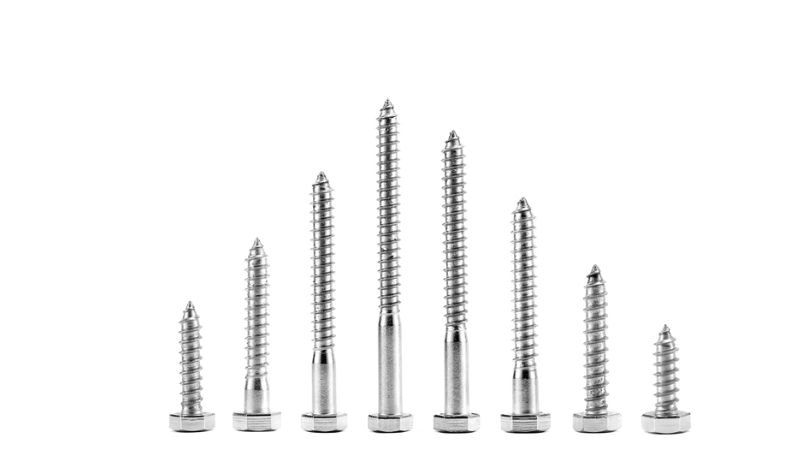
How do lag screws differ from traditional wood screws?
Lag screws are larger and stronger than traditional wood screws, featuring coarse threading and a hexagonal head. Unlike wood screws, they can handle heavier loads and do not require a nut, engaging the material directly.
How do you determine the shear strength of a lag bolt?
The shear strength of a lag bolt is determined by its diameter and the material it’s embedding into. Manufacturer specifications often provide strength ratings, but a structural engineer can give a precise assessment for critical applications.
What distinguishes a lag screw from a carriage screw?
A lag screw has a coarse thread and is used where high strength is necessary, while a carriage screw has a smoother thread and a rounded head with a square section underneath. Carriage screws are generally used for aesthetic purposes and in situations where the screw is not expected to endure heavy stress.
